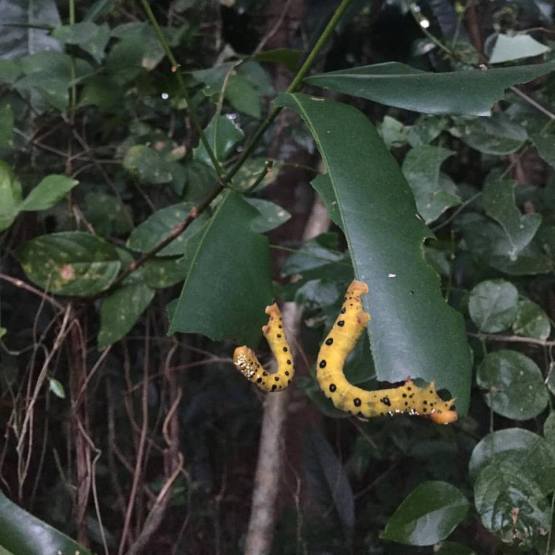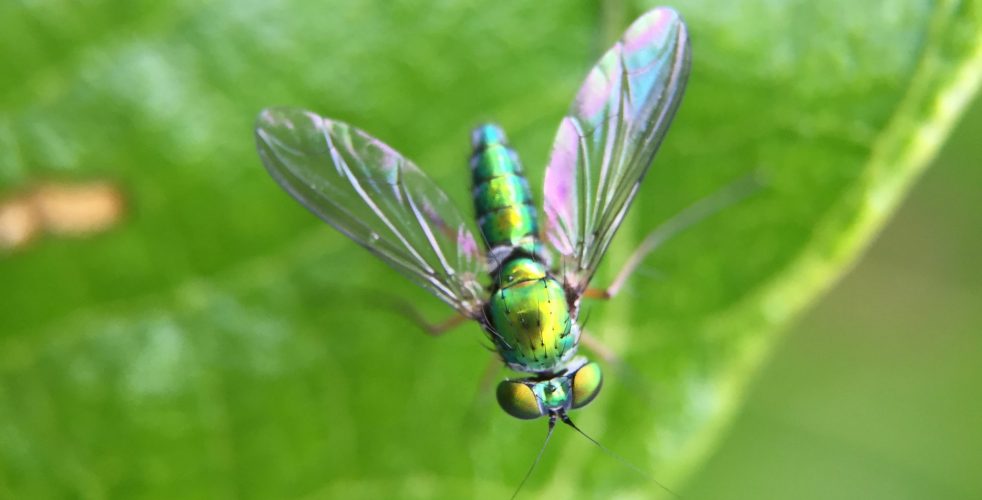Insect encounters may be the quickest explanation for my project with the more scientific description of ethnoentomology, the study of insects in culture, tagged in. I am two weeks into my Watson year of independent study, and have come up with as many different descriptions of my project as people I have met.
In short, I have been very fortunate. After ~6 months of applying and planning, I was awarded a Thomas J. Watson Fellowship to travel around the world and study what I love most: insects. Watson’s are essentially golden tickets to explore a project of your design around the world. Students have pursued projects from beekeeping and forced migration to incarceration and micro-finance. There’s a strict budget, a few rules, and a difficult application process, but once you’re awarded the world is yours for exploring!
Previous Watson Fellows from my college include Maia Yang (micro-finance), Dillion Blankenship (beekeeping), Alison Harrington (fungi) and Audrey Morrow (equity in school systems).
For my Watson Year, I propose to investigate what makes us love, hate, or simply ignore insects and how this perception inhibits both our study and appreciation of these creatures in our modern world. I will learn new applications of insects for Australian agriculture and entomophagy in Thailand by working alongside entomologists on public outreach and citizen science projects, volunteering on insect farms, and interviewing market owners and consumers of insect products. In South America I will engage in ethnoentomology, learning how humans have found medicinal and cultural uses for insects. Aside from their importance to humans, I will also explore aesthetics through a range of experiences — from raising insects in Thailand to seeing how artists have portrayed them in galleries throughout England. Rounding off my experiences I will volunteer with exterminators to meet those who rely economically on human fear of insects and compare it to my gained skills on insect appreciation and education.

So, first stop: Australia! Travelling from Arkansas to Australia was an initiation into independent travel as my delayed flight caused me to miss a connection from Los Angeles to Brisbane. Since the airline hotel voucher wasn’t accepted at the hotel and there were no rooms available, I ended up making a couple of Australian friends who were stuck in the same situation. We managed to find a motel around 4am and got a few hours of much needed sleep. The next day, my sister’s friend in LA opened her apartment for me to rest a little more before my new flight to Australia. After a reviving nap, I then got to explore Venice Beach and learned something about myself: I am a die-hard optimist. Flight missed? Well, I’ve never been to LA before. Checked-bag misplaced after you finally arrived in Australia? Well, no one seems to have judged me for wearing the same clothes every day!

In fact, each time something unfortunate would happen like this, I tried to find some silver lining. Tobin Northfield of James Cook University and one of the first contacts for my project, was kind enough not only to pick me up from the airport, but he also changed his schedule around to pick me up when my flight plans changed. The other girls staying at the hostel were overly kind to me, offering their own things when my bag was misplaced. We got free dinner at the hostel and explored the Cairns Night Market. We ventured into music venues over the weekend and strolled along the Esplanade, relaxing with all of the tropical birds that surrounded us. When I moved out of Cairns and finally into the Smithfield area, closer to James Cook University, the other students in the area immediately welcomed me and thankfully my checked bag was delivered after 5 days.
After this suite of mixed-fortune events, my project was underway. Since arriving in Smithfield on Monday, August 1st, I have been exploring the tropical rainforest near Cairns and working on a variety of projects in the Northfield lab at James Cook University (JCU). I’ve continued my hobby of hunting for insects with some exciting successes (Rhino beetles, mantids, tarantula hawks, and more)! My work at the university has also proved exciting with projects ranging from milking scorpions for their venom to recording the different insects found on an organic cocoa crop.

Cocoa Pollination: Samantha Forbes is working on her PhD at JCU by studying the cocoa pollination system. Sam currently has a publication in review on the green ants / weaver ants (Oecophylla smaragdina) as a biological control agent for the cocoa crop. Organic chocolate can be challenging to grow with scads of insect pests ready to enjoy the crop before we can. Green ants provide biological control of these other pestiferous insects by dominating a tree and killing off other pests. Sam has also worked with the crop to document an interesting dichotomy: biting midges that pollinate cocoa, but as the name implies, several people want to kill off the ‘midgies.’ To further document the complex relationship with the cocoa pods and local insects on the crop, Dee, a graduate student at JCU and I have been recording all the insects on the trees each morning (which is a wonderful way to spend the day if you ask me).

This research project is just one study in a field of innovations for agriculture. Biological control, or nature fighting nature, is more environmentally friendly, and challenging at times, than using pesticides, but may the future of agriculture. Aside from their negative impacts on the environment and affects on non-targetted species (including pollinators), pesticides only work for a little while. Insects can evolve resistance to these pesticides over time. Think about it: you’re imposing a powerful selective pressure (pesticide) on your crop that kills most of the pests. But say a handful of pests (30/1,000) are able to survive the spray, then over time that small group with the right mutation will reproduce until the population has returned to it’s original size, but this time they’re all resistant. By this point, a new pesticide is needed and research into making these can be expensive. By using natural predators and pollinators on our crops, we are reaping the benefits of ecological services. Now it’s in our hands on how exactly we should go about it, including planting native plants, creating corridors connecting crops to natural habitat, and modifying the landscape to have other features these predators and pollinators need.

Scorpion Milking: Scorpions aren’t just useful for scaring your friends. Dave Wilson has studied venom in spiders and scorpions to try and discover novel treatments for cancer. I assisted in this research by collecting venom from the scorpions. Each one was handled with great care and I learned that they’re more willing to pinch you than sting you, which I was very grateful for. Stinging can be an expensive process for them as they need that venom for defense and hunting. The venom paralyzes their prey, protecting the scorpion from any damage it might get while fighting.
In order to collect the venom, it takes two people. Christina, a German intern studying microbiology and I worked together to milk the scorpions. We first placed the scorpions on a sponge, delicately holding down their pinchers and body with rubber bands and a soft Velcro strap. Once positioned and unable to squirm out, one of us would hold a pipette tip on the end of the stinger while the other lightly zapped the telson (stinger-tail) to provoke venom out. Small samples were collected to later analyze the contents, and each scorpion was caringly placed back in their habitat. Although there were a few feisty specimens, none of the scorpions stung Christina or myself!

Insects caught (but not collected): Back home I have display cases with formal and artistic portrayals of local Arkansan insects I have caught over the past four years. One shadow box is proudly displayed in my mom’s kitchen, while the others decorate my room. Unfortunately I can’t continue that collection process while I’m travelling and have since begun to instead photograph and observe insects in their habitats. Here’s a few of my favorites:






More posts will come soon about the insects I’ve seen around the area and what other adventures I get to go on in the local rainforest and great barrier reef! For more frequent posts and photos of insects and more, check out my Instagram: justanothernakedape



HEY this is great 🙂 also saw your post on my blerg, thanks. I saw some scorpions recently too here in arizona, though I certainly did not milk them. Did you know they glow (seriously glow) in blacklight?
LikeLike
Yeah, man! Wish I could see in UV. Apparently there’s a bioluminescent fungi haven here called Finch Hatton Gorge. An awesome woman here told me about how she hiked to a waterfall there, then it got dark and she was sort of cursing herself for not bringing a light, but when she turned back the path was illuminated on each side by fungi!
I’ll let you know if I get to go to this fungi-labyrinth and send some pictures of the fungi I’ve seen so far.
LikeLike